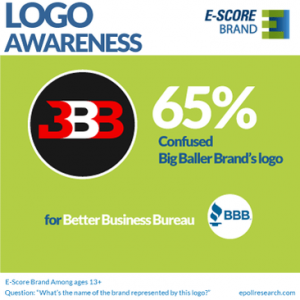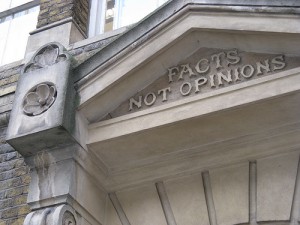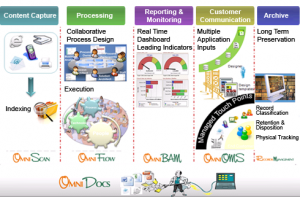The importance of being available in the sea of information on the web has caused many companies to shift investments in sales to marketing. The quest for a conversion turns to advertising.
The paths people take online can be winding and without purpose. Most people are guilty of finding themselves loading a link to a webpage and thinking to themselves how in the hell did I get here, and why is it 3 am in the morning? Well, maybe the first part, but the point stands—online behavior is sporadic and various.
The volatile nature of online browsing does not discredit online advertising, in fact, it likely strengthens the case as the variant channels in which people find themselves browsing the internet can all offer a pathway to your brand.
Customers’ behavior on these pathways to your brand have changed as well. Previously, people had to visit a physical store and speak to a sales representative to get information. Now, customers can do all of their research online while sitting on their couch.
Once they’ve done enough research they will come to an informed decision about whether to buy or not. This means that your brand’s information has to be available.
The Customer Journey
As stated earlier, the online sale cycle is different from the traditional sales cycle. The funnel a customer goes through before converting has more stages. These stages often involve a new touch point for the potential customer to interact with like another online channel on which your brand is available.
We can look at an example of the online sales cycle by first considering the stages of the funnel:
Awareness
To begin the sales cycle a potential customer might be served a display advertisement while browsing one of their favorite news sites or while monitoring their social media feeds.
This is the first touch point with your potential customer, and it is best to come out of the gates strong. We suggest harnessing your best content such as a whitepaper demonstrating your industry expertise for a compelling offer on your display advertisement. Whether they click through or not, the potential customer is now aware of your business.
Research
Perhaps later on the prospect conducts a general search on something you mentioned in your ad copy or an industry category you illuminate in your white paper. The potential customer has had their curiosity piqued and they end up landing on your website from your strong PPC and SEO. But they leave without making a conversion.
A few days later, your brand appears on social media or a news site again in the form of a retargeted ad that is catered to what they were looking at on your website. The potential customer is reminded of his or her interest and then, after becoming familiar with your name, conduct a branded search.
Negotiation
Your branded ads make you easily visible on the search results page and the user clicks through to your website. The potential customer is still interested in your service and they have conducted some research prior, but now they want to experience it first-hand. They sign up for a trial or a free demo. This is the finalization of their research.
After their trial or free demo, you follow up with them via email. The negotiation stage of the funnel is entered. You adjust your offer to suit the potential customer’s needs, and they make the purchase! The potential customer has become a confirmed customer and your sales cycle is successful.
The Touch Points

Now that we have the story, let’s bring it back to the various touch points you used to bring your customer through the online sales funnel.
White Paper/Display Ad
You introduced your brand with an informational offer like a white paper on a display advertisement. This touch point allowed you to reach an individual whose interests matched your customer’s profile. This individual is high up in the sales funnel and you addressed this by offering information that forms their awareness of your brand.
Potential customers that are higher in the sales funnel will respond better to awareness and research facilitating marketing.
Branded Search Ad
Your brand was available when the user searched for the industry related subject that you put on their radar. You were available in the form of a paid search ad on the results page that was highly relevant because it matched the keywords the potential customer used. This touch point furthered your potential customer’s awareness and facilitated their research of your brand.
Remarketing Ad
You then reached them with a remarketing ad on social media. This reminder insured that your potential customer would move further down the sales funnel, either by clicking the ad or by performing a branded search. This search or click is done with intent and an expectation for what they will land on.
This expectation must be met with a landing page that addresses what stage of the sales cycle the potential customer is in, just like the ad copy that brought them there.
Free Demo
The next touch point was a free demo that finalized your potential customer’s research phase. This touch point opens up your opportunity for negotiation.
Using a personal email as the next touch point, you managed to convey your interest in providing the potential customer with the services you offered. Feeling knowledgeable about your service and cared for by your brand, the potential customer made the purchase, moving into the final, desirable stage of the online sales funnel.
Google’s Customer Journey
Google has a neat online tool that lets you see which online channels are most likely to assist in an interaction with your business before the last conversion. Check out the tool here for information on your own industry.
Here’s an example from Canada for a large business in the shopping industry:
You can see from this visualization that it is often a display ad that will introduce a customer to a brand, but it is not the only interaction on the path to a conversion—multiple channels contribute to the end goal.
The essence of modern online advertising is that conversions involve multiple channels and repeated exposure before they are completed. This is why a thing called conversion attribution is incredibly important for your online advertising strategies, especially for PPC.
Conversion attribution defines the multiple channels that are attributed to a final conversion. Understanding that a conversion might take exposure to a paid search ad, a display ad a few days later, and then a branded search ad illuminates the importance of having all of these channels up and running.
Underestimating channels such as display or branded can be detrimental to a brand’s PPC success.

You can see from the above example that without the initial display ad the lead may have never entered a search for the business. Conversion attribution requires a shift in thought from the success of single channels to the overall success of a brand when all of its channels are assessed and attributed to a conversion.
The Value of Conversion Attribution
It can be difficult to understand the real value of paid search without conversion attribution.
HP along with Google studied how paid search affected its business. From the study HP and Google determined that for every $ 1 HP spent on paid search advertising, they made a 530% return, or $ 5.30.
Verizon worked with Applied Predictive Technologies (APT) and Google to determine how paid search ads affected in-store sales. They were impressed by the results:
- Five new phone activations in Verizon owned-and-operated stores for every phone activation online
- 366% return on non-brand search advertising spend
Now, you might not be a giant corporation with the resources available to analyze your data but you can conduct focused experiments within your paid search accounts that can determine how different channels impact your conversions.
An experiment might look like increasing display advertising for a period. After the period ends, you will look first for a noticeable increase in organic and paid branded searches.
Then, you might look for an increase in impression-assisted conversions, an attribute given to ads that are served to a unique individual before they make a conversion later on, and click-assisted conversions, an attribute given to ads that are clicked by a unique individual without a conversion, but later on a conversion is recorded. Both of these assisted forms of conversion can help you understand how your various channels contribute to your overall account goals.
Consider the Channels
With the ways in which we browse the internet multiplying every day, it is now essential for businesses to be able to reach customers and potential customers in as many online channels as possible. Maximize your brands efficiency in multiple channels to remain competitive in the changing digital world.
If you have any more questions, or want advice on how to analyze the value of different channels for your business, feel free to contact us.
Digital & Social Articles on Business 2 Community(60)






